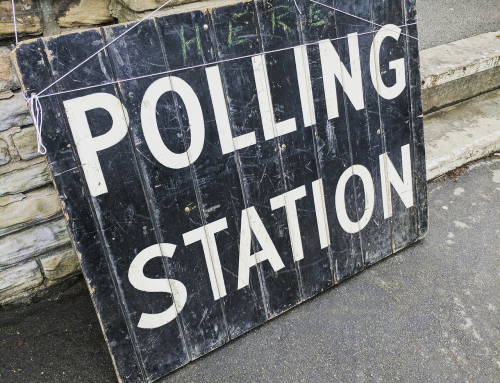The Impact of Research Evidence on Education Policy: How Members of Parliament respond to evidence in relation to secondary selective education
Authors: Alan Bainbridge, Joanne Bartley and Tom Troppe
A ‘Sticky’ Problem.
The evidence on the inequity of 11-plus testing has been clear for many years, and now as a result of the impact of the Covid-19 pandemic on schooling, even the keenest fans of selective education can no longer ignore this unfairness. Additionally, in these difficult times it is the responsibility of our elected members to use the evidence presented to them to make informed decisions that will benefit all children.
In this short report we present new evidence to help understand the story behind the continued existence of selective secondary education, that since its inception as part of the tripartite education system in England and Wales, set out in the now obsolete 1944 Education Act 1, has refused to go away. We shall provide novel insight into how evidence is used in policy making while also exposing a moral discourse of ‘selective = good / non-selective = bad’ through a detailed analysis of the dialogue used in these debates. The ‘stickiness’ of the grammar school debate will be shown not to be associated by adherence to evidential rigour but instead to a dubious moral claim.
The 11-plus based system had detractors from its inception and by 1965 the then government ordered Local Authorities (LAs) to end academic selection and to move towards a system of comprehensive education. The vast majority of LAs began converting existing grammar and secondary modern schools into comprehensives, although this transformation was slowed down in 1970 when the government withdrew the compulsion to convert. To date 12 English LAs have resisted comprehensive secondary schooling, with Buckinghamshire, Kent, Lincolnshire, and several smaller authorities 2 maintaining and supporting selective education in 163 grammar schools. This is where the ‘sticky’ grammar school debate has become stuck and continues to dominate thinking in education policy beyond the expected influence of a tiny number of Local Authorities.
This research seeks to understand why: despite the dearth of local authorities making claims to return to selective secondary education, and alongside an overwhelming evidence base for comprehensive education; some local authorities still promote 11-plus style selection. Calls are made to return to selective schools and significant recent government funding has been made available only for expansion of grammar schools. Given the current government’s mantra for education policy to be ‘evidence-based’ so that ‘every child should have the chance to succeed in life’, our focus is on how members of both Houses of Parliament respond to and use evidence in debates that are centred on or revolve around calls to increase the number of grammar schools.
Our research approach: what we did and why
Our primary source of information came from transcriptions recorded in Hansard between October 2015 to March 2019 as this represents a period during which the first new grammar school for 50 years had been approved through to the establishment of the £50 million Selective School Expansion Fund. All debates within the House of Commons, the House of Lords and parliamentary committees that were either focussed on or mentioned grammar schools were analysed using a qualitative analysis software package (Nvivo). The analysis identified the main themes discussed during the debates, while the dialogue associated with the presentation of evidence was analysed to explore how arguments were developed and responded to.
Figure 1 below shows the consistency and peaks of grammar schools being debated or included in parliamentary debates.
Grammar Debates: Parliamentary Themes
During this period 326 debates associated with grammar schools were analysed identifying the themes referred to. Dozens of themes emerged, broadly similar in the Commons, Lords or committee environment, the most frequently mentioned are selection (195 times); good schools (164 times) – showing an interesting distinction between the Conservative Party (125x) and Labour Party (30x); evidence was brought up on 160 occasions; while the link to disadvantage and social privilege occurred 91 times.
What is interesting about these themes is the surprising prevalence of the term ‘good’ within these debates. It would be expected that, by definition, selection would feature highly as would disadvantage and social privilege as grammar schools are frequently presented as means to overcome disadvantage and the influence of the socially privileged.
The ‘Good School’ Discourse:
Some words:
A discussion of the ‘good school’ discourse is valuable as it highlights the tensions between basing policy on evidence or moral assumptions. We shall discuss understandings of evidence later but for now our focus is on how ‘good’ is used in parliamentary debates on grammar schools. It is our contention that supporters of selective education either wilfully or unconsciously, ignore the evidence they proport to base policy on in favour of something more ambiguous. Yet, ‘goodness’ can also be used to capture the public imagination influencing conceptions of both selective and non-selective schooling. By continually referencing grammar schools as ‘good’ simply confirms a moral judgement that by default dismisses all other schools as ‘bad’, with the additional advantage of not having to articulate a narrative of ‘badness’ alongside potential implications of losing voters.
The appropriation of goodness is particularly potent in the English educational context: it is both an official Ofsted ranking, yet it also carries connotations of moral goodness that cannot be ignored. The term ‘outstanding’, despite also being an Ofsted ranking and speaking more to a standards agenda is seldom used, neither are equally comparable (although non-Ofsted terms), such as ‘high-performing’ or ‘high-achieving’. The latter two are also less morally ambiguous and could be used instead of ‘good’. But it is the ‘good schools’ discourse that dominates this debate. One such example would be:
‘I want to establish a thread to run through the debate—that grammar schools are simply good schools and that we need good schools to flourish.’
(Gareth Johnson (MP) during the Grammar School Funding debate, 13 January 2015)
Such statements – ‘that grammar schools are simply good schools’ – provide no space for debate or inclusion of evidence and are indeed overly simplistic, if only in the assumption that all other ‘good’ schools are not as worthy as grammar schools.
Some numbers:
Many similar quotes could be included but for the sake of brevity, we turn our focus on numbers to back up our case for the damaging disorientating dominance of a goodness discourse. Grammar schools, despite being fewer than 5% of all secondary schools, are named more than 9 times more often in Parliament than their majority non-selective counterparts. Over the past 5 years:
- 37% of the time when grammar schools are mentioned, it occurs in conjunction with the word ‘good’.
- For every grammar school rated good or outstanding, the word ‘good’ was used in Parliament at a rate of 235%.
- For every comprehensive school rated good or outstanding, the word ‘good’ was used in Parliament at a rate of 1.7%.
The terrible irony is that despite such obvious and extreme discrepancies being as subtle as the proverbial bull in a china shop, this represents an astonishing unwillingness by those who support selection to utter the words and admit that “non-selective schools can be good”. If the same choice of words were to be used to represent proportionately the number of comprehensive schools rated good or outstanding, comprehensive schools would need to be referred to in conjunction with ‘good’ 6698 times over those 5 years, not the 49 times this actually happened.
The ‘good schools’ discourse in £££s
If the above is not shockingly dramatic enough, we shall, playfully, push our argument home a little more forcefully. We acknowledge what is to follow is fantasy but the inherent logic exposes the power of the dominant selective school = good discourse, and indeed one particular type of selective school, is more worthy than all other good schools.
Financially, the £50 million earmarked for the Selective School Expansion Fund if applied to each of the 161 (ish) ‘good grammars’ (this includes Ofsted rankings of Good and Outstanding) would provide £310,559 extra funding per school. If the logic of allowing good schools to expand, simply in relation to Ofsted rankings – after all this is the government approved standard – were applied to all good schools, then this would correspond to:
- The 2,850 good and outstanding comprehensive schools it could be expected that £885,093,150 (2,850 x £310,559) would be budgeted for their expansion.
- 91% of the 20,925 primary schools (19,041 schools) are rated good and outstanding. Therefore, they would receive £5,913,353,919—almost £6 billion
- And the 2,915 good and outstanding nurseries would receive £905,279,485
- Actual total expansion budget for good schools: £7,703,726,554
We accept this is fantasy, for example, we have not accounted for pupil numbers or additional education need, but our point is a logical one. Selective education and in particular grammar schools are over-represented through the discourse of goodness in Parliamentary debates. In the government’s own approved evidenced world of Ofsted, grammar schools receive a vastly disproportionate amount of interest and financial resource. If all other good schools were to be treated in a similar fashion an extra £8 billion budget on education to expand good schools would not be unreasonable!
Are some schools ‘more good’ than others?
Grammar schools, evidenced by Ofsted, are good schools, so the ‘good schools’ claim cannot be refuted, and we do not wish to do so. But we do question why the goodness attributed to them is more worthy of recognition and reward than other good schools. Grammar schools are only 0.6% of all good schools.
If this debate (and the policy decisions) were about supporting and promoting evidenced educational standards, then the term ‘outstanding’ would be the defining terminology. Instead ‘good’ is the chosen term and ‘good’ has moral overtones that go beyond reported educational standards. Whether the logic is articulated or not it seems that grammar schools = good schools = selective schools = good schools. It is a circular self-fulfilling argument. Likewise, and certainly not articulated is the logic that; non-selective schools = not good schools = comprehensive = non-good schools. Another circular self-fulling argument, only this time with damaging consequences for the 99.4% of good schools not deemed good enough for selective expansion.
It would seem that those who promote and support selective education in parliamentary debates are in fact very selective themselves: only this time they have decided to select certain types of good schools and to de-select the evidence-base that would shine a light on their illogical decision making. We would question whether the hugely disproportionate discourse of goodness around selective education is therefore associated more with, at the very least, a mis-conceived worldview of morally ‘good schools’, an unwillingness to accept comprehensive education, or a deliberate refutation of the very source of evidence that schools are ultimately judged by. It would appear that the later may will be the case, and as we will show below, in some instance MPs can be seen to engage with evidence.
Is all Evidence ignored?
It is perplexing that the discussion above indicates that a moral judgment is being made about the goodness of certain types of school – irrespective of evidence. It can be considered even more insidious as our research also identified times when evidence is presented, listened, and responded to. In the Education and Social Mobility Debate (House of Commons, 22 Nov 2016), Judith Cummins (MP) presented evidence that refuted the common argument that grammar schools are vital engines of social mobility.
There is no evidence, no justification and no basis for the belief that selective education leads to improved social mobility. The House does not have to take my word for it; the Government’s own advisory body on social mobility, the Social Mobility Commission, says that grammar schools do not work.
Since that debate, we are not aware of any MP who has tried to defend grammar schools as a source of social mobility and indeed the above quote uses evidence to refute arguments that selection improves social mobility. The earlier assertion that our elected members might be selective as to which evidence they do or do not use appears more plausible and led us to analyse how MPs respond to the evidence presented in parliamentary debates.
Our analysis found that on the occasions when evidence is presented, it is only actively engaged with 32% of the time, equally evidence is simply ignored (32%) and 21% of the instances just become an opportunity to attack the opposite party’s policy/debate. Of particular concern are the 26% of cases that when the evidence is not engaged with, or used politically, the respondent instead reverts to taking a personally held moral position that ‘grammar schools are good schools.’ Thus, dismissing the other 99.4% of evidenced good schools and ignoring the DfE’s aim to align policy changes with the best research evidence available’ (p. 9).
A Summary and a way forward
The moral discourse of ‘good schools’ dominates debate and guides policy. Hence, the government (and no doubt certain Local Authorities) base their selective secondary education policy more on moral assumptions of ‘good schools’ than on evidence. The social mobility debate showed the greatest use of, and engagement with the evidence, providing support to our claim that supporters of selective education are trapped within the discourse of goodness. And, regardless of the evidence that is presented, they are unwilling to recognise and accept good in any other type of schooling.
There is a challenge for those of us, and particularly elected members, who support a system of state education not driven by outmoded ideas of selection and the appropriation of moral superiority towards grammar schools. That is to reclaim the discourse of ‘goodness’ for all good schools, and what can be more morally good than the desire for our young children not to be segregated into different types of schooling as the result of a short fallible test at the age of 10.
To a large extent, reporting our research has already begun to disrupt the morally ‘good’ discourse of selective education and ‘the emperor has been exposed walking naked through the streets’. The real moral tragedy though is that the 11-plus is not a fantastical fairy tale; it is actually implemented early in September every year to around 100,000 children, many of whom had their 10th birthday a few weeks before. Let us hold these children in mind and once and for all, reject silly playground notions of “my school is ‘more good’ than your school”.
Footnotes
- The 1944 Education Act introduced free secondary education for all, with each local education authority deciding on the format of this schooling. The majority of LEAs used a tripartate system, with around a dozen LEAs, both Labour and Conservative, choosing to use comprehensive schools. Clement Attlee’s government supported the tripartite system, in part influenced by Cyril Burt’s discredited theory that there were three types of child who required three different types of school. State-funded secondary education was divided up into three types of school: grammar, secondary technical and secondary modern. The selection of children into one of these schools centred on an ’11-plus’ examination that attempted to measure the IQ of 10-year-old children and allocate accordingly. Those who obtained a top 25% test score were deemed academically able and offered grammar school places, those who failed were distributed into mainly secondary modern schools (in actuality there were very few secondary technical schools).
- The 12 authorities that still select 25% of more pupils are Bexley, Buckinghamshire, Kent, Lincolnshire, Medway, Poole, Slough, Southend-on-Sea, Sutton, Torbay, Trafford and Wirral






